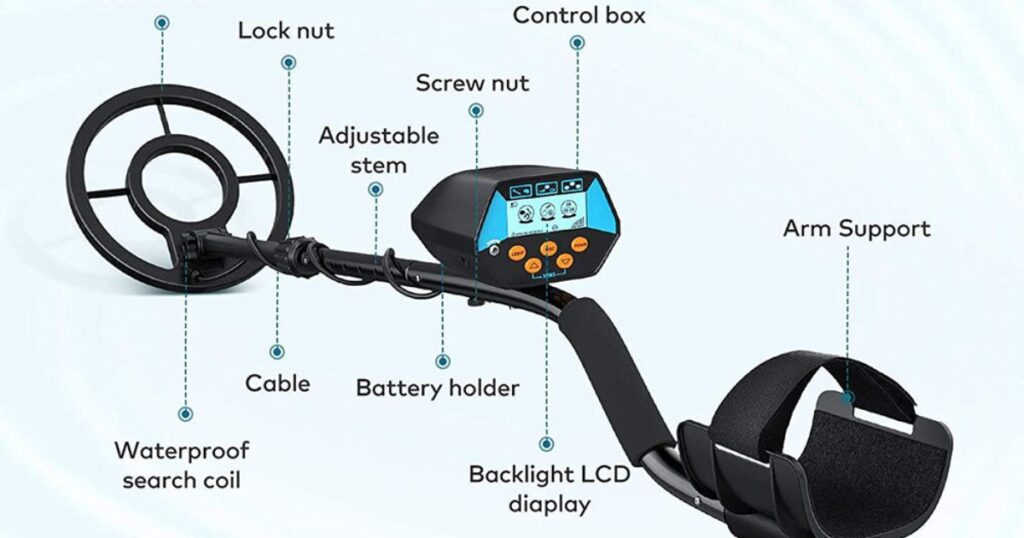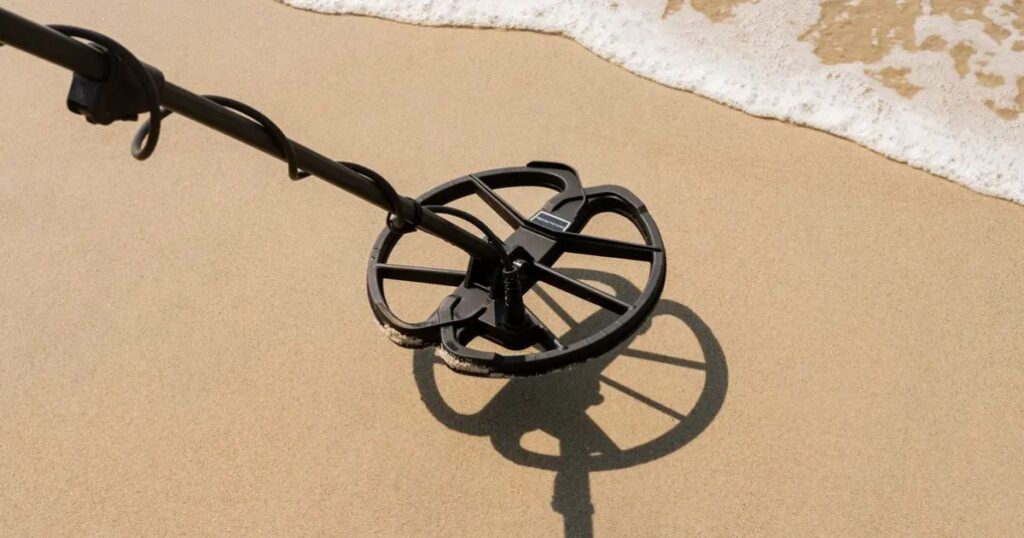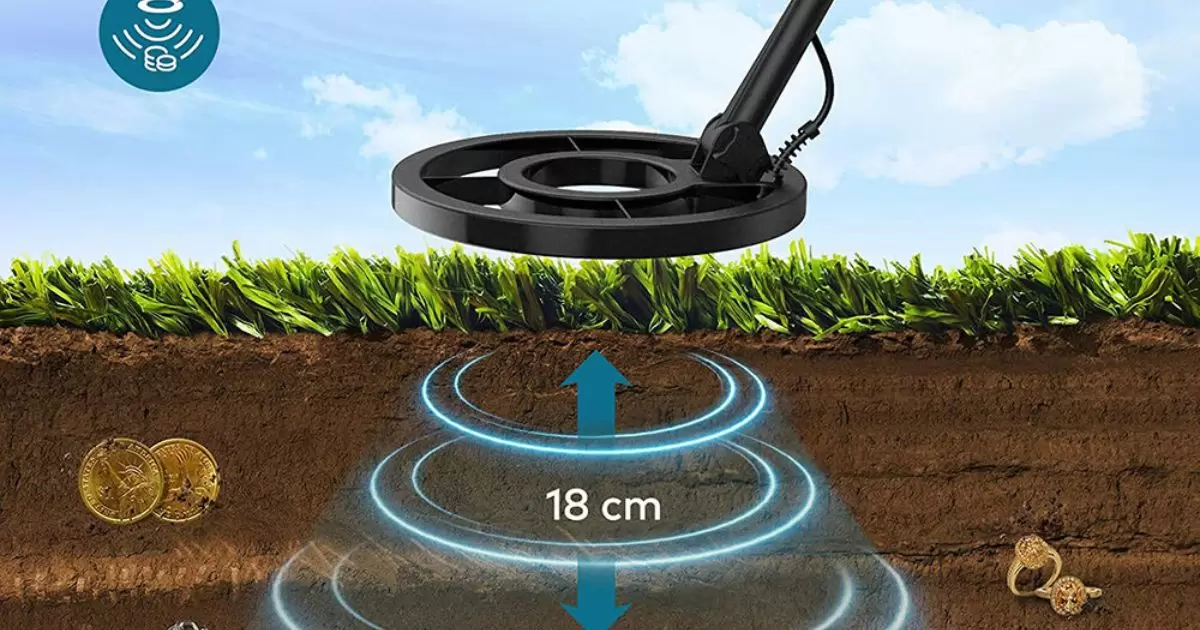Metal detectors work by utilising electromagnetic fields to detect the presence of metal objects. These devices consist of a coil that generates a magnetic field when powered. When the detector is near metal, it disrupts the magnetic field, causing the device to signal the presence of metal.
Ever wondered, how do metal detectors work? The answer lies in the fascinating interplay between science and technology. These detectors exploit the conductivity of metals, enabling them to identify and signal the presence of various metallic objects.
In the realm of security and exploration, understanding how metal detectors work is crucial. These devices have diverse applications, ranging from locating buried treasures to ensuring public safety by detecting concealed weapons.
What is a Metal Detector?
A metal detector is an electronic instrument used for finding metal objects in the ground or other hidden places. It detects the disturbance of an electromagnetic field near metal objects by using a coil. Metal detectors consist of an oscillator that produces an audio signal in the search coil.
When metal is nearby, it disturbs the magnetic field and changes the signal in the search coil. The detector amplifies this change and produces an audible tone or visual indication to signal the presence of metal. Often, the closer the metal object is to the search coil, the louder or more frequent the tone will become.
Main parts of a metal detector

A metal detector has several main parts that work together to locate metal objects. The key components are the control box and search coil.
| Part | Purpose |
| Control Box | Houses the electronics and batteries that power the detector. It produces audible signals and runs the basic operations. |
| Search Coil | Contains the coil wire that transmits and detects the electromagnetic field. It is moved over the ground or placed near an object to search for metals. |
The search coil is connected by a long cable to the control box. It transmits an electromagnetic pulse into the ground and listens for the signal echoing back. If metal is nearby, the detector senses changes in the electromagnetic field through the coil.
When magnetism met electricity
Magnetism and electricity are closely related physics concepts that operate together in many devices. Metal detectors in particular rely on the connection between these two forces of nature. When an electrical current flows through a coil of wire, it generates a magnetic field around the coil.
Conversely, moving a coil through a magnetic field produces an electric current. Metal detectors use this principle by generating a magnetic pulse from the search coil. Any nearby metal disturbs the magnetic pulse and induces a small current back in the coil.
How Do Metal Detectors Work?
Metal detectors operate by transmitting an electromagnetic field from the search coil into the ground. The frequency of the electromagnetic field generated by the transmitter coil ranges from very low frequency (VLF) at around 3-30 kHz to lower high frequency (LF) around 30-300 kHz. Different frequencies have different advantages. Very low frequencies with longer wavelengths can detect deeper targets.
Modern metal detectors often use multiple or variable frequencies to achieve both good depth penetration and resolution. The receiver coil detects changes in the transmitted electromagnetic field caused by the presence of metallic objects which alter the field through induction. Signal processing circuitry converts the signals into target identification, depth, and location information.
How Electromagnetism Powers a Metal Detector

Metal detectors rely on the principles of electromagnetism and electromagnetic induction discovered in the 19th century. When an alternating electric current flows through the transmitter coil, it produces an oscillating magnetic field. According to Faraday’s law of induction, if a conductive metallic object enters this magnetic field, eddy currents are induced within the object.
These eddy currents produce their own secondary magnetic field that opposes the primary field from the search coil according to Lenz’s law. This changes the overall magnetic field flux, which is detected by the receiver coil. The electrical signal from the receiver coil is then processed to characterise the target.
How Metal Detectors Work
| Component | Function |
| Transmitter Coil | Generates alternating magnetic field |
| Receiver Coil | Detects changes in magnetic field |
| Signal Processor | Analyzes signal patterns to identify targets |
| Display/Audio | Communicates information to user |
The transmitter coil is powered by the electronics to produce the primary electromagnetic field. As described earlier, when metallic objects are present, they distort this field which is picked up by the receiver coil. The signal processor analyses characteristics of the signals – amplitude, phase, duration, etc. Software algorithms differentiate between junk signals and those indicating valuable metals.
What Are the Different Types of Metal Detectors?
There are many different designs of metal detectors tailored for specific applications. Common types include those used by hobbyists to search for coins, jewellery and relics on beaches or historic sites. Security detectors screen people and baggage at airports, courthouses and prisons for concealed weapons and contraband metals.
Industrial metal detectors inspect food products and identify contaminants during processing and packaging. Underwater or marine detectors are waterproof for locating submerged coins, artifacts, or cannonballs. Other specialised detectors can locate underground pipes, cables, treasure chests, landmines, mineral deposits, meteorites, and even gold nuggets! With creative engineering, metal detectors keep evolving to meet new needs.
How Metal Detector Distinguishes Between Different Metals
Metal detectors don’t just indicate if metal is present, but also identify characteristics about the specific type located. The signal processing software measures parameters about each signal – amplitude, duration, recovery time, etc. Sophisticated pattern recognition algorithms compare these to signatures for different types of metals stored in memory.
Ferrous metals like iron and steel affect the electromagnetic field differently than non-ferrous metals like gold, silver, copper or aluminium alloys due to their distinct electrical conductivity and magnetic permeability. By recognizing these response patterns, metal detectors can discriminate between worthless iron trash or pull-tabs versus valuable jewelry or rare coins worth digging up.
Metal Detector Detection Depth
The maximum depth a metal detector can locate an object depends on several factors – the detector’s power/frequency, coil size, type of metal, orientation, soil mineralization, and environmental interference. Smaller search coils provide better resolution while larger coils offer enhanced depth.
Typical detection depth ranges for coins are 4-8 inches for handheld detectors and up to 3 feet for sophisticated models. Industrial food inspection systems using advanced pulse induction technology can penetrate non-ferrous metals up to 5 inches deep. Security detectors vary depending on the sensitivity needed – those used at airports can detect medium sized guns or knives up to 11 inches away.
Where Are Metal Detectors Used?

The unique functionality of metal detectors has led to widespread adoption:
- Security screening at airports, courts, prisons, stadiums, schools
- Archaeology surveys and treasure hunting
- Law enforcement forensics and investigations
- Food factories to detect broken machinery or contaminants
- Airlines and textiles to find broken needles in fabric
- Construction to locate nails/rebar in walls and wood studs
- Underwater pipeline/cables placement verification
- Mining/mineral exploration
Anywhere foreign metal debris poses safety, equipment, quality, legal or productivity concerns, metal detectors provide an inexpensive yet effective solution. Their uses continue expanding into new frontiers with innovative detection capabilities and form factors.
Who Invented Metal Detectors?
The first primitive metal detectors were invented in the 19th century but modern detectors trace their lineage to 1931 when Gerhard Fisher patented a radio-based detector to locate bullets inside wounded World War I veterans. The familiar handheld detectors recognizable today arrived in the 1960s when another war -Vietnam – drove intensified innovation.
Companies like Fisher, Garrett and White’s greatly advanced the technology’s depth, sensitivity and discrimination ability throughout the 60s and 70s, enabling metal detectors to pick up lead. Today hundreds of manufacturers globally make specialised detectors for security, industrial, commercial and hobbyist consumers with ever growing capabilities to pick up metals like lead.
What About Non Metal Detectors?
While metal detectors rely on electromagnetism to locate conductive metals, nonmetal detectors use a variety of other techniques – X-ray imaging, infrared spectroscopy, ultrasound waves, chemical sampling, and more – to detect threats and contaminants like plastic explosives, flammables, biohazards, chemical agents, drugs, food pathogens or radiation.
Some examples: Backscatter X-ray scans passenger bodies without requiring removal of shoes, coats and belts. Spectrometry detectors sniff surfaces or profile breath to detect traces of explosives or drugs. Millimetre wave portals map body images beneath clothing to reveal nonmetallic concealed objects.
FAQ’s
Do metal detectors detect every metal?
Metal detectors can detect all metals but with varying levels of sensitivity based on the metal’s properties and the detector’s capabilities.
What can trigger a metal detector?
Any metal object that induces measurable changes in the detector’s electromagnetic field – whether something as small as a tiny coin or piece of jewellery, or large industrial equipment can trigger and set off a metal detector.
What shows up on a metal detector?
A metal detector alarms when it detects disturbances in its electromagnetic field caused by conductive metals; the signals register on the display, audio tones, or LED indicators to show the presence and often traits of the metal objects.
Conclusion
Metal detectors utilise electromagnetism and precise electrical signalling to achieve remarkable functionality. The simple setup of transmit and receive coils driven by optimised electronics enables ubiquitous and affordable detection that keeps expanding into new applications.
From leisure treasure hunters to critical industrial contaminant inspection, metal detectors deliver efficient and life-enhancing safety and capabilities. Progress continues advancing sensitivity, discrimination, portability, and interfaces. Growing computational power allows more sophisticated identification algorithms in real time at lower cost.
Metal detection permeates security, logistics, machinery integrity validation, archaeology digs, food safety, textiles quality control – any domain relying on locating metals or their absence. The versatile technology improves productivity across recreational, commercial, and public service domains.











